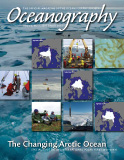First Paragraph
Established in August 2006 by young researchers involved in the planning stages of the fourth International Polar Year (IPY 2007–2008), the Association of Polar Early Career Scientists (APECS) has evolved into the pre-eminent international organization for polar researchers at the beginning or early stages of their careers. Now comprising over 2,600 members from approximately 74 countries, APECS represents an international, interdisciplinary body of undergraduates, graduate students, postdoctoral researchers, early faculty members, educators, and others with interests in polar regions and the cryosphere. The program aims to raise the profile of polar research by providing a continuum of leadership that is both international and interdisciplinary, and by stimulating collaborative projects in research, education, and outreach. In line with this aim, many of its founding members are now transitioning into the APECS mentor role by providing guidance, advice, and opportunities for newer APECS members, demonstrating the perpetuity of the organization and its mission.

